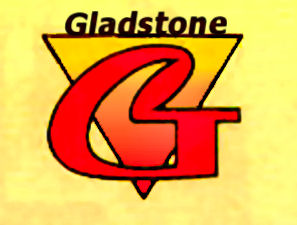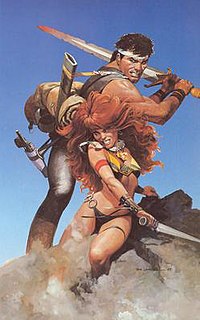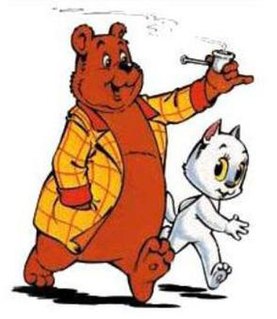External links
- Dick Briel, Lambiek comciclopedia entry
- (in Dutch) Dick Briel
- A Work in Progress
- (in Dutch) De Patathiek
- Obituary (Dutch)
- Glenat publishers (French)
| Dick Briel | |
|---|---|
| Born | December 28, 1950 Leiden, Netherlands |
| Died | September 25, 2011 The Hague, Netherlands |
| Nationality | Dutch |
| Area(s) | Cartoonist, Writer, Penciller |
Notable works | Professor Julius Palmboom |
Dick Briel (born 28 December 1950, in Leiden, died in The Hague, 25 September 2011) was a Dutch comic artist living in Amsterdam who followed the Ligne claire style. He is most famous for his Professor Julius Palmboom comics. So far, three adventures were published, with a fourth left unfinished.
The first two adventures appeared in Dutch comic weekly Eppo in 1979. Two albums were published by Oberon in the 1980s, and are again available from Arboris publishers. The third adventure, London Labyrinth, appeared in the Veronica weekly TV magazine and was also published as an album.
The Professor Palmboom stories are science-fiction, dealing with things like killer plants. The second book consists of two stories. A fourth book was left "to be continued" but Ratcliffe Highway has not yet been released (see the 'A Work in Progress' website).
International editions of the Palmboom adventures include French language versions, published by the then Grenoble-based Glenat.
After several years of absence, Dick Briel reappeared in Veronica magazine as the co-writer with Ruud den Drijver of the humorous horror comic 'Max en Mummie', drawn at first by Steven Dupré (1995) and then by Wout Paulussen (1995–96).
Dick studied at the Rietveld Art Academy. Two albums were published by Oberon in the 1980s. With its Clear Line style and 1950s atmosphere, the series also found its way to the French-speaking audience.
Briel also did the comic Hulbert and wrote a few others. Another book was released called Sketches from Victorian Times, though it is not an adventure. Briel died of cancer on September 25, 2011.
Bandes dessinées, abbreviated BDs and also referred to as Franco-Belgian comics, are comics that are usually originally in French and created for readership in France and Belgium. These countries have a long tradition in comics, separate from that of English-language comics. Belgium is a bilingual country, and comics originally in Dutch are culturally a part of the world of bandes dessinées; these are translated to French and concurrently sold to the French-reading audience.

Gladstone Publishing was an American company that published Disney comics from 1986 to 1990 and from 1993 to 1998. The company had its origins as a subsidiary of Another Rainbow Publishing, a company formed by Bruce Hamilton and Russ Cochran to publish the Carl Barks Library and produce limited edition lithographs of Carl Barks oil paintings of the Disney ducks. The name references Gladstone Gander.
Disney comics are comic books and comic strips featuring characters created by the Walt Disney Company, including Mickey Mouse, Donald Duck and Uncle Scrooge.

Ligne claire is a style of drawing created and pioneered by Hergé, the Belgian cartoonist and creator of The Adventures of Tintin. It uses clear strong lines sometimes of varied width and no hatching, while contrast is downplayed as well. Cast shadows are often illuminated, and the style often features strong colours and a combination of cartoonish characters against a realistic background. The name was coined by Joost Swarte in 1977.

Jean, knight Van Hamme is a Belgian novelist and comic book writer. He has written scripts for a number of Belgian/French comic series, including Histoire sans héros, Thorgal, XIII and Largo Winch.
Notable events of 1996 in comics. See also list of years in comics.

Blake and Mortimer is a Belgian comics series created by the writer and comics artist Edgar P. Jacobs. It was one of the first series to appear in the Franco-Belgian comics magazine Tintin in 1946, and was subsequently published in book form by Le Lombard.
Glénat Editions SA is a French publisher with its head office in Grenoble. Their products include comic albums and manga in France, Benelux, and in the past Spain; it was founded by Jacques Glénat. The Benelux subsidiary, Glénat Benelux N.V., is located in Brussels, Belgium. The Switzerland subsidiary, Glénat Editions (Suisse) SA, has its headquarters in Nyon. The Spanish subsidiary had its head office in Barcelona.

Storm is a soft science fiction/fantasy comic book series originally drawn by Don Lawrence. It tells the adventures of an astronaut who accidentally gets lost in time. The series originated in Dutch, but has since been translated into many other languages.

Willy Vandersteen was a Belgian creator of comic books. In a career spanning 50 years, he created a large studio and published more than 1,000 comic albums in over 25 series, selling more than 200 million copies worldwide.

Tom Puss is a Dutch comic strip, created by Marten Toonder. Together with Hans G. Kresse's Eric de Noorman and Pieter Kuhn's Kapitein Rob it is regarded as the Big Three of Dutch comics.
Dutch comics are comics made in the Netherlands. In Dutch the most common designation for the whole art form is "strip", whereas the word "comic" is used for the (usually) soft cover American style comic book format and its derivatives, typically containing translated US superhero material. This use in colloquial Dutch of the adopted English word for that format can cause confusion in English language texts.

Le Petit Vingtième was the weekly youth supplement to the Belgian newspaper Le Vingtième Siècle from 1928 to 1940. The comics series The Adventures of Tintin first appeared in its pages.

Alix, or The Adventures of Alix, is a Franco-Belgian comics series drawn in the ligne claire style by Jacques Martin. The stories revolve around a young Gallo-Roman man named Alix in the late Roman Republic. Although the series is renowned for its historical accuracy and stunning set detail, the hero has been known to wander into anachronistic situations up to two centuries out of his era. The stories unfold throughout the reaches of the Roman world, including the city of Rome, Gaul, the German frontier, Mesopotamia, Africa and Asia Minor. One voyage goes as far as China.
Professor Palmboom is a comic album series written and drawn by Dutch artist Dick Briel. They are illustrated in the ligne claire style. Three albums and one book were released. They follow the adventures of Professor Julius Palmboom.

Aliens: A Comic Book Adventure is a 1995 adventure game developed by Cryo Interactive Entertainment and published by Mindscape for MS-DOS. It is loosely based on the Aliens comic book series with many references to the graphic novel Labyrinth.

Freddy Milton Larsen is a Danish comics artist and writer, mostly known under his pen name Freddy Milton. He has worked with the European editions of Donald Duck and Woody Woodpecker. Familien Gnuff and Villiam are two of his own comics creations.

Zig et Puce is a Franco-Belgian comics series created by Alain Saint-Ogan in 1925 that became popular and influential over a long period. After ending production, it was revived by Greg for a second successful publication run.
Paul Gillon was a French comics artist. He won the 1982 Grand Prix de la ville d'Angoulême.
Le Journal de Mickey is a French weekly comics magazine established in 1934, featuring Disney comics from France and around the world. The magazine is currently published by Unique Heritage Media. It is centered on the adventures of Mickey Mouse and other Disney characters but also contains other comics. It is credited with "the birth of the modern bande dessinée". It is now the most popular French weekly magazine for children between 8 and 13 years old.